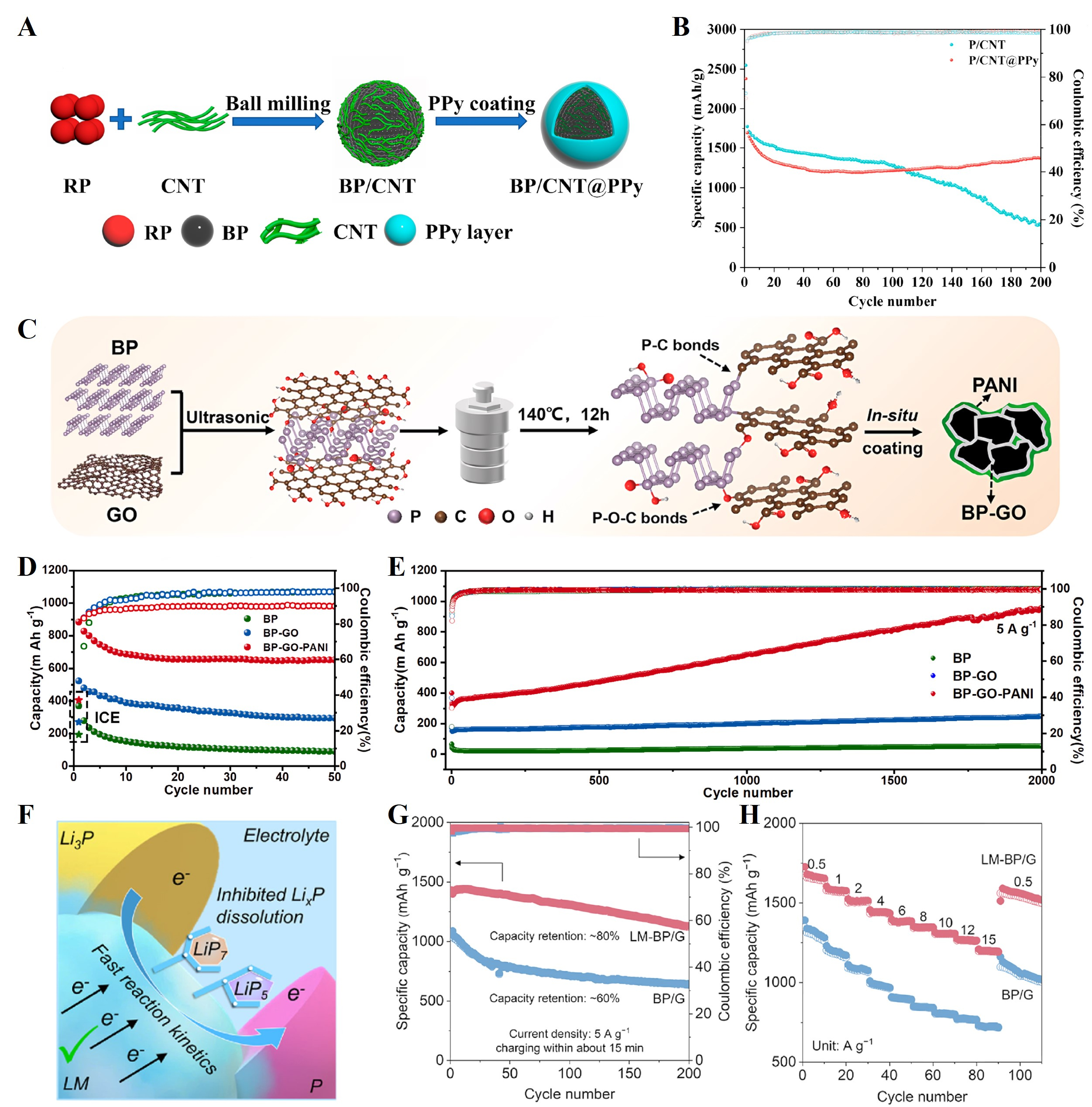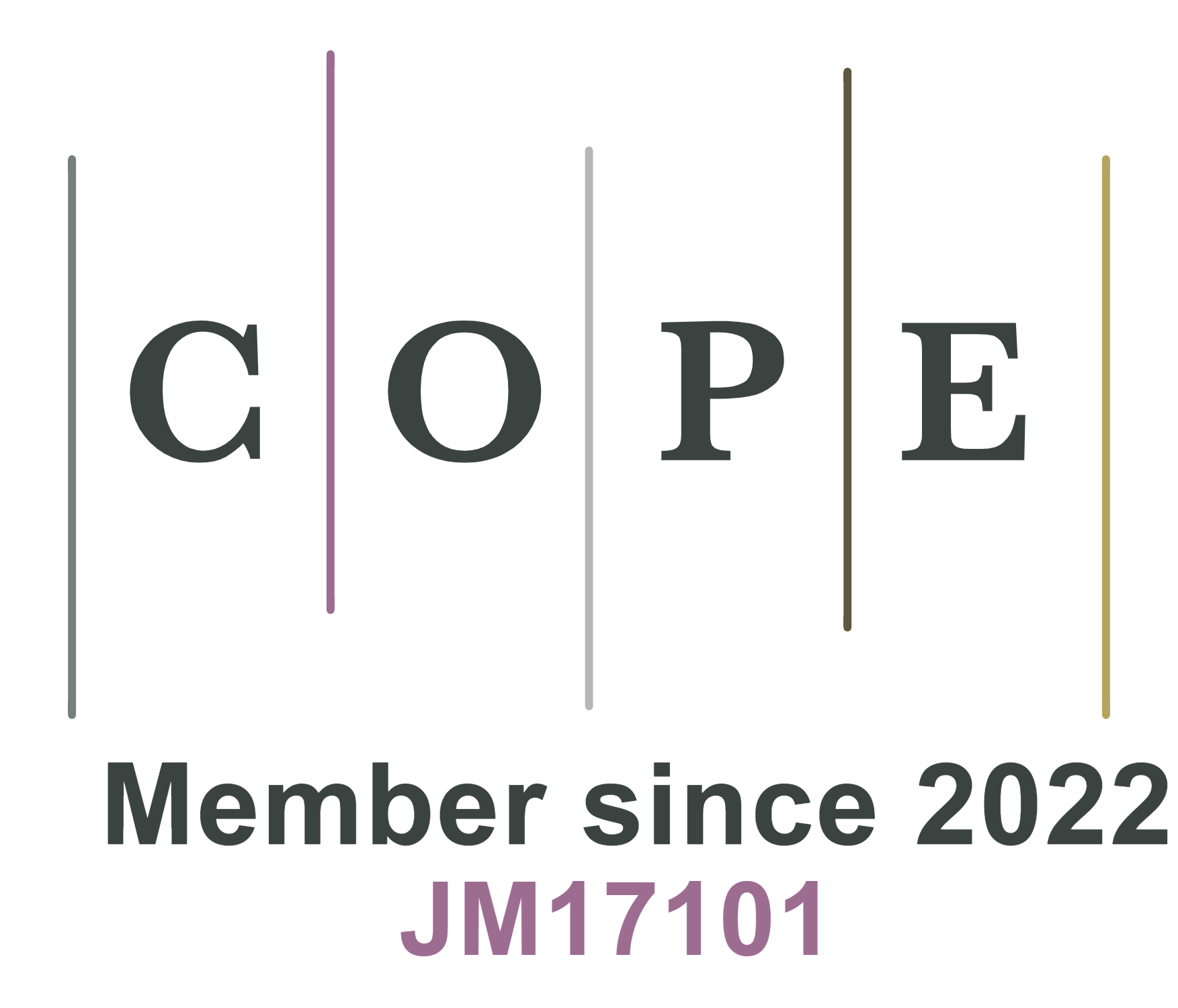fig8
Figure 8. (A) Schematic illustration of the synthesis process of the BP/CNT@PPy composite; (B) Comparison of the cycle performance between BP/CNT@PPy and BP/CNT composites at a current density of 260 mA g-1 within 0.01-3.0 V. Reproduced with permission[121]. Copyright 2021, American Chemical Society; (C) Sketch map of the whole compounding process of BP-GO-PANI via a solvothermal reaction between BP and GO and then coated in-situ by PANI; Cycling performance of the BP-GO-PANI, BP, and BP-GO electrodes at (D) 0.1 A g-1 and (E) 5 A g-1. Reproduced with permission[56]. Copyright 2022, Elsevier; (F) Schematic illustration of self-healing and delithiation accelerant effects of the LM-BP/G anode; (G) The cycling performance of LM-BP/G and BP/G anodes at 5 A g-1; (H) The rate performance of LM-BP/G and BP/G anodes at varied rates from 0.5 to 15 A g-1. Reproduced with permission[123]. Copyright 2025, Elsevier. BP: Black phosphorus; CNTs: carbon nanotubes; PPy: polypyrrole; BP-GO-PANI: BP-graphene oxide-polyaniline; LM-BP/G: liquid metal-BP-graphite; RP: red phosphorus.










